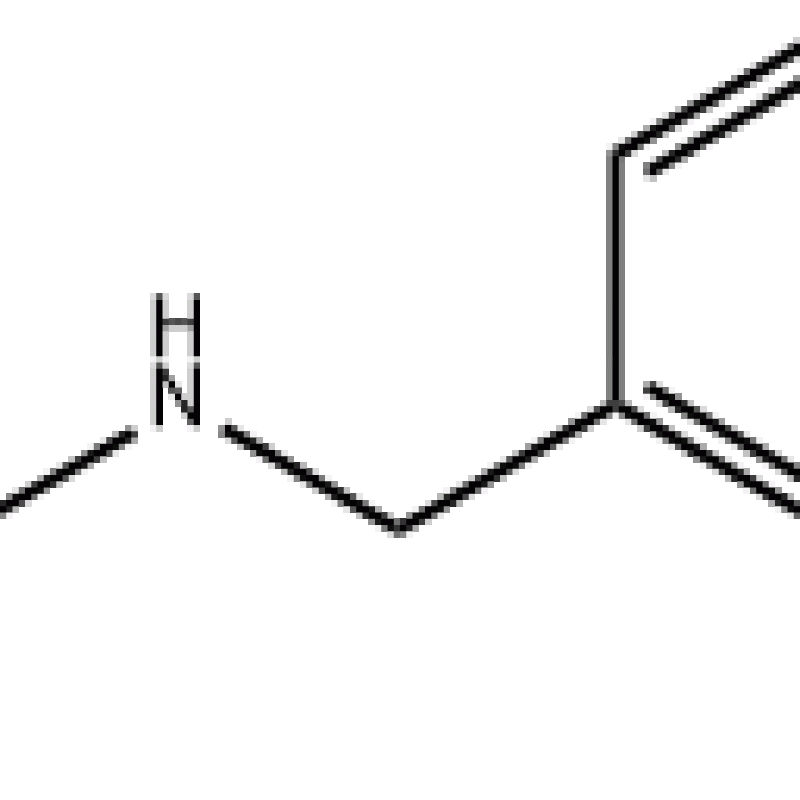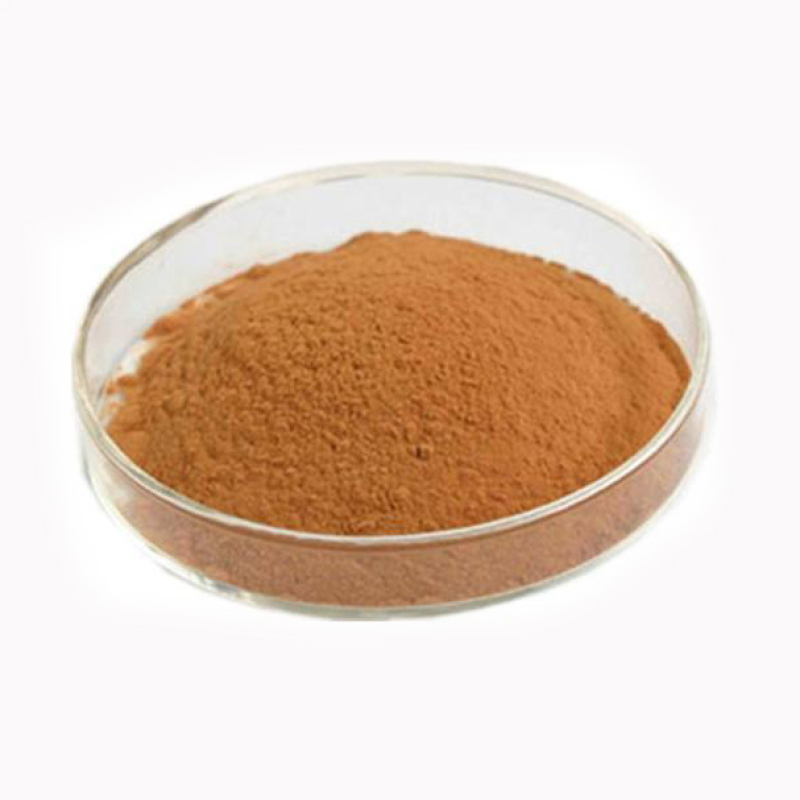Products Description of N,N-Dimethylaniline CAS#121-69-7N,N-Dimethylaniline (CAS#121-69-7) is an organic compound that presents as a yellow, oily liquid with an amine-like odor. It is characterized by its density of approximately 0.96 g/cm³, a boiling point of 193.5±0.0 °C at 760 mmHg, and a melting point in the range of 1.5-2.5 °C (literature value) .
Contact Now
N,N-Dimethylaniline CAS#121-69-7N,N-Dimethylaniline is a mild yellow to mild brown oily liquid. Has a pungent odor. Soluble in ethanol, chloroform, ether and fragrant natural solvents, barely soluble in water.It is a tertiary amine used in the synthesis of various triarylmethane dyes like malachite green.
Contact Now
4,4'-Methylenebis(N,N-diglycidylaniline) Chemical PropertiesBoiling point 619.3±35.0 °C(Predicted)density 1.15 g/mL at 25 °C(lit.)vapor pressure 0Pa at 24.85℃refractive index n20/D 1.601(lit.)Fp >230 °Fform clear liquidpka4.58±0.50(Predicted)color Light yellow to BrownWater Solubility 9.2mg/L at 20℃LogP2.12 at 22℃EPA Substance Registry SystemOxiranemethanamine, N,N'-(methylenedi-4,1-phenylene)bis[N-(oxiranylmethyl)- (28768-32-3)Safety InformationHazard Codes Xi,NRisk Statements 43-51/53Safety Statements
Contact Now
Products Description of N,N'-Ethylenebis(stearamide) CAS#110-30-5N,N'-(ethane-1,2-diyl)distearamide is a colorless to light yellow waxy solid. It has good thermal stability and low volatility.
Contact Now
Products Description of 1-N',6-N'-dibenzoylhexanedihydrazide CAS#35658-33-4Colorless liquid1-N',6-N'-dibenzoylhexanedihydrazide Chemical PropertiesBoiling point 737.4±56.0 °C(Predicted)density 1.237±0.06 g/cm3(Predicted)pka10.67±0.23(Predicted)Factory and Equipment ShowFast delivery timeInventory 2-3 working days New production 7-10 working days
Contact Now
Products Description of N,N'-Carbonyldiimidazole CAS#530-62-1N,N′-Carbonyldiimidazole (CDI for short) is a derivative of imidazole. Its imidazole structure has a closed large P bond, and one of the nitrogen atoms has a lone pair of electrons in the unbonded sp2 orbital. These determine that CDI has strong chemical reactivity and can react with functional groups such as ammonia, alcohol, and acid to synthesize many compounds that are difficult to obtain by general chemical methods.
Contact Now
Products Description of N,N-Diethyl-m-toluamide CAS#134-62-3DEET (diethylmethylbenzamide), also known as DEET, is a broad-spectrum insect repellent that repels a variety of biting insects in various environments, including stinging flies, midges, black flies, chiggers, deer flies, fleas, gnats, horse flies, mosquitoes, sand flies, small flies, stable flies and ticks. DEET was developed and patented by the U.S. Department of Agriculture during World War II. The product was designated as a mosquito repellent for use by the U.S. military in 1946.
Contact Now
Products Description of N,N-Dimethyldodecylamine CAS#112-18-5Colorless liquid. Melting point -20℃, boiling point 247℃, 110-112℃ (0.4kPa), relative density 0.775, refractive index 1.4375.
Contact Now
Products Description of N-Isopropylbenzylamine CAS#102-97-6N-Benzylisopropylamine can be used as an intermediate in the synthesis of compounds and as a precursor in the production of certain drugs. Due to its similarity in appearance and physical properties to methamphetamine, it has been included in the DEA's consideration in recent years. N-Benzylisopropylamine forms an amine adduct with magnesium in toluene at room temperature. Using N-Benzylisopropylamine as a ligand, bis(cyclopentadienyl)magnesium was prepared and characterized.
Contact Now
Products Description of N,N'-Dimethylpiperazine CAS#106-58-1N,N'-dimethylpiperazine is a flammable liquid that is more flammable when exposed to open flames, high temperatures, and oxidants; combustion produces toxic nitrogen oxide fumesN,N'-Dimethylpiperazine Chemical PropertiesMelting point -1 °CBoiling point 131-132 °C750 mm Hg(lit.)density 0.844 g/mL at 25 °C(lit.)vapor pressure 20 hPa (20 °C)refractive index n20/D 1.4463(lit.)Fp 65 °Fstorage temp. Store below +30°C.solubility miscibleform Liqu
Contact Now
Products Description of N-(n-Butyl)thiophosphoric triamide CAS#94317-64-3A highly effective inhibitor of urokinase activityN-(n-Butyl)thiophosphoric triamide Chemical PropertiesMelting point 58-60°CBoiling point 277.4±23.0 °C(Predicted)density 1.171±0.06 g/cm3(Predicted)vapor pressure 0.001-1.7Pa at 25℃Fp 96°Cstorage temp. Keep in dark place,Inert atmosphere,2-8°Csolubility DMSO (Sparingly), Methanol (Slightly)form Solidpka6.23±0.70(Predicted)color White to Off-WhiteWater Solubility 4.3 g/L at 25 ºCSensitive StenchInChIKeyHEPPIYNOUFWE
Contact Now
Products Description of N-LAUROYL-L-GLUTAMIC ACID CAS#3397-65-7N-(1-oxododecyl)-L-glutamic acid (9CI) is a chemical whose English name is L-Glutamicacid, N-(1-oxododecyl)-.N-LAUROYL-L-GLUTAMIC ACID Chemical PropertiesMelting point 95-96 °CBoiling point 543.6±40.0 °C(Predicted)density 1.081±0.06 g/cm3(Predicted)storage temp. Sealed in dry,Room Temperaturesolubility Aqueous Base (Slightly), Chloroform (Slightly)form Solidpka3.46±0.10(Predicted)color White to Off-WhiteLogP2.964 (est)EPA Substance Registry SystemL-Glutamic acid, N-(1-oxododecyl)- (3397-65-7)
Contact Now
Products Description of N,N-Diethyl-p-phenylenediamine sulfate CAS#6283-63-2White or light red crystals. Soluble in water, slightly soluble in alcohol. Easily oxidized to pink.
Contact Now
Products Description of N,N'-Methylenebisacrylamide CAS#110-26-9N-N'-methylenebisacrylamide is an amine organic compound and is widely used as a chemical reagent. It is used in the textile industry to produce thickeners and adhesives, and in oil mining to produce leak-stopping agents. It is also widely used in leather chemicals, printing and many other fields. It is a quality product that is widely used in the market.
Contact Now
Products Description of N-Cyclohexyl-2-pyrrolidone CAS#6837-24-7N-Cyclohexyl-2-pyrrolidone or CHP is a yellow to colorless liquid. It has a low vapor pressure, and is nearly odorless. It has a low solubility in water, but is soluble in a variety of organic solvents.CHP is used in the electronics industry as a photoresist stripper (usually in combination with other solvents like N-methyl-2-pyrrolidone), and as a chemical polisher of copper in circuit board fabrication.
Contact Now
Products Description of 2-Chloropyridine-N-oxideCAS#2402-95-12-Chloropyridine-N-oxide is an important compound in pyridine nitrogen oxides. It is an important intermediate for pesticides, medicines and daily chemical products. It is also an important intermediate for the synthesis of skin cleansers, shampoos and pyrithione and other antiseptic and antifungal fungicides. It is an essential raw material for the synthesis of 2-chloro-4-nitropyridine, an important intermediate for the synthesis of phenylurea plant growth regulators.
Contact Now
Products Description of N-Methylformamide CAS#123-39-7Pure N-methylformamide is a colorless, transparent, viscous liquid with m.p.-3.8℃, b.p.198℃, n25D 1.4310, relative density 0.9986 (25℃). It is soluble in water and inorganic salts.
Contact Now
Products Description of N-Acetylsulfanilyl chloride CAS#121-60-8Light brown to brown powder or fine crystals.
Contact Now
Products Description of N-OLEOYLSARCOSINE CAS#110-25-8It is an amino acid derivative compoundN-OLEOYLSARCOSINE Chemical PropertiesMelting point 16.1-17.0℃Boiling point 499.4±38.0 °C(Predicted)density 0.961Fp 221°Cpka3.62±0.10(Predicted)Odorat 100.00?%. blandStability:Stable. Combustible.
Contact Now
Products Description of N,N-DiMethyl-p-toluidine CAS#99-97-8N,N-dimethyl-p-toluidine is an organic compound with the chemical formula C9H13N.
Contact Now
N,N-Dimethylformamide CAS#68-12 - 2Dimethylformamide is a flammable, colorlessliquid with a fishy, unpleasant, amine-like scent at relativelylow concentrations. The smell threshold is 0.47100 ppm.Molecular weight= 73.11; Specific gravity (H2O:1)= 0.95;Boiling factor = 153℃; Freezing/Melting factor = 261℃;Vapor pressure= three mmHg at 20℃; Flash factor = 58℃;Autoignition temperature= 444.5℃. Explosive limits are:LEL = 2.2%; UEL= 15.2% at 100℃.
Contact Now
N-B-HYDROXYETHYL OLEYL IMIDAZOLINE CAS#95-38-5It is widely used in the process of oil and natural gas extraction, gathering and transportation, and in the atmospheric and vacuum, catalytic cracking, hydrofining, hydrocracking and other devices of refineries to prevent corrosion of metal equipment.
Contact Now
Products Description of N,beta-Dimethylphenethylamine hydrochloride CAS#5969-39-1A phenethylamine derivative as sympathomimetics.
Contact Now
Products Description of N-Hexadecyltrimethylammonium chloride CAS#112-02-7Cetrimonium chloride, also known as hexadecyltrimethylammonium chloride, is a white crystalline powder. It is easily soluble in isopropyl alcohol and water. It produces a lot of foam when shaken. It has good compatibility with cationic, nonionic and amphoteric surfactants.
Contact Now

































